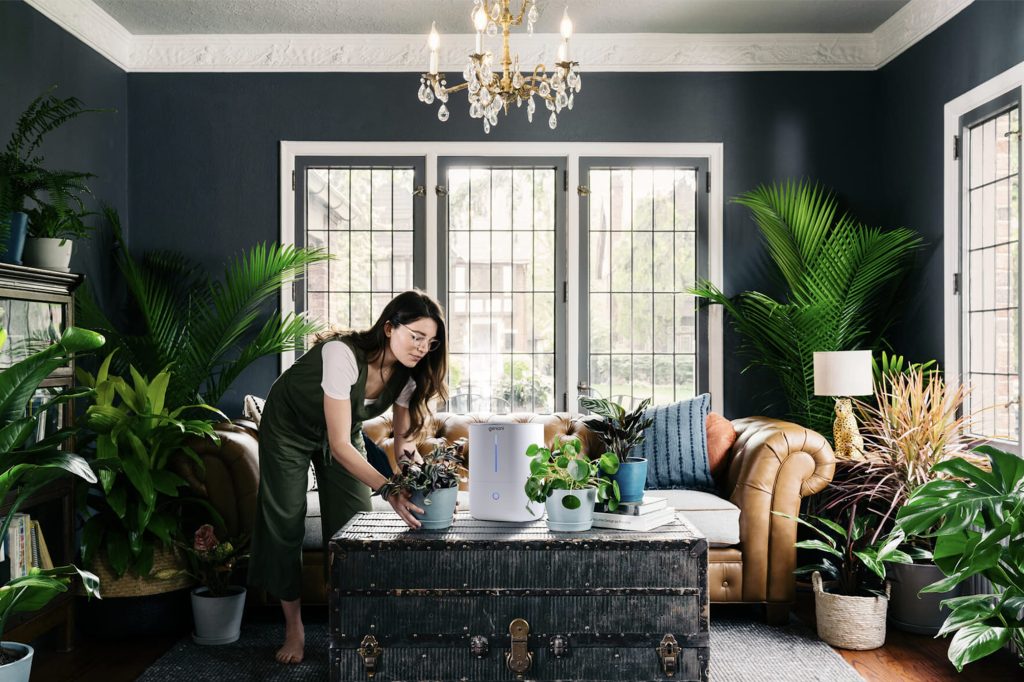Indoor air quality is often overlooked, but it plays a crucial role in our overall health and wellbeing. Poor air quality in our homes can lead to a variety of health issues such as respiratory problems, allergies, and fatigue. To improve the air quality in your home, there are several steps you can take to ensure that you and your family breathe clean, fresh air.
1. Keep your home clean and clutter-free
One of the easiest ways to improve air quality in your home is to keep it clean and clutter-free. Dust, dirt, and allergens can accumulate in carpets, curtains, and upholstery, so regular cleaning is essential. Vacuuming and dusting frequently can help eliminate these contaminants and improve the air quality in your home. It is also important to declutter your home as clutter can trap dust and make it harder to keep clean.
2. Invest in an air purifier
Air purifiers are devices that help eliminate pollutants such as dust, pollen, pet dander, and mold spores from the air in your home. They work by drawing in air, passing it through a filter, and then releasing clean, purified air back into the room. There are many different types of air purifiers available, ranging from small, portable units to larger, whole-house systems. When choosing an air purifier, look for one with a HEPA filter, as these are the most effective at removing airborne particles.
3. Ventilate your home
Proper ventilation is essential for maintaining good air quality in your home. Opening windows and doors to let in fresh air can help reduce indoor air pollutants and improve ventilation. If you live in an area with high levels of outdoor air pollution, consider using an air purifier with a carbon filter to help remove pollutants from the air before they enter your home.
4. Control humidity levels
High humidity levels can lead to mold growth and dust mites, which can worsen indoor air quality and cause health issues such as respiratory problems and allergies. To control humidity levels in your home, use a dehumidifier during humid weather or in areas of your home that tend to be more humid, such as the basement or bathroom. You can also use exhaust fans in the bathroom and kitchen to help reduce moisture levels in the air.
5. Avoid using toxic cleaning products
Many household cleaning products contain harmful chemicals that can pollute the air in your home. To improve air quality, consider using natural, eco-friendly cleaning products that do not contain volatile organic compounds (VOCs) or other harmful chemicals. You can also make your own cleaning products using simple ingredients such as vinegar, baking soda, and essential oils.
6. Keep indoor plants
Indoor plants can help improve air quality by absorbing carbon dioxide and releasing oxygen into the air. They can also help remove toxins such as formaldehyde, benzene, and trichloroethylene from the air. Some plants that are particularly effective at purifying the air include peace lilies, spider plants, and snake plants. Just be sure to keep the plants well-watered and in a well-lit area to ensure they thrive and continue to clean the air in your home.
7. Avoid smoking indoors
Cigarette smoke contains over 7,000 chemicals, many of which are harmful to health and can pollute the air in your home. If you or someone in your household smokes, it is important to smoke outdoors to prevent indoor air pollution. Consider quitting smoking altogether to improve your health and the air quality in your home.
8. Test for radon
Radon is a colorless, odorless gas that is the second leading cause of lung cancer in the United States. It can seep into your home through cracks in the foundation or walls and accumulate in indoor spaces. To ensure that your home is free of radon, consider testing for radon levels using a radon testing kit. If elevated levels are detected, you may need to install a radon mitigation system to reduce radon levels and improve indoor air quality.
In conclusion, improving air quality in your home is essential for maintaining good health and wellbeing. By following these tips, you can create a clean, healthy indoor environment for you and your family to enjoy. Remember to keep your home clean and clutter-free, invest in an air purifier, ventilate your home, control humidity levels, avoid using toxic cleaning products, keep indoor plants, avoid smoking indoors, and test for radon to ensure that the air in your home is clean, fresh, and safe to breathe.

